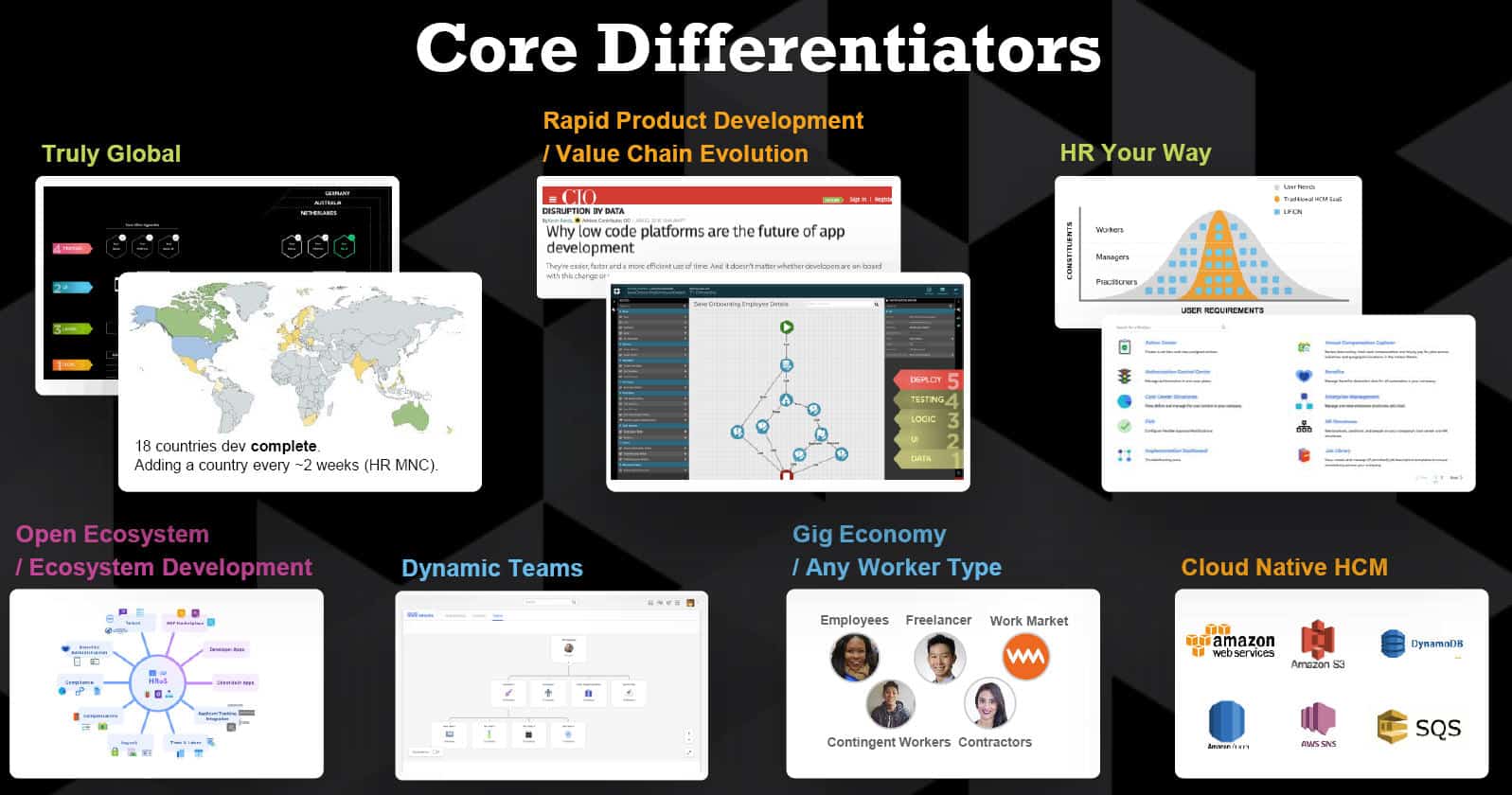Have been quite for a bit, busy with big creation at work, here is a recent analyst review of what we have accomplished so far. As always feel free to reach out and discuss more, the community engagement is what keeps me going here.
Originally published by by · PUBLISHED · UPDATED – here.
ADP Unveils One Of The More Exciting HCM Systems I’ve Seen.. And More
Most of you probably think ADP is kind of an old payroll company, focused primarily on small businesses. Boy, are you wrong.
ADP, in fact, is the world’s first ever cloud-based HCM company (the ADP payroll is a cloud system), and the company is more innovative than ever.
I just attended ADP’s latest half-day analyst meeting and I want to share some exciting things with you, primarily because they’re innovations I’ve been looking for over the last few years.
1) Brand New Network-Based HCM Platform
Let’s start with the most exciting: over the last 3-4 years ADP has been secretly building an entirely new HCM platform to go along with the company’s completely new re-engineered payroll engine (below). This new platform, which doesn’t have a name yet (originally code-named LIFION), is what I’ve been looking for.

It’s a true team-centric system built on a Graph Database using what is often called “low code” development. In other words, you can change it by moving objects on the screen and the system reconfigures itself.
A Graph Database is a huge new technology, pioneered by a vendor called Neo4J. If you’re a geek like me you’re going to want to read about this. You can get the book from Neo4J and if you’re a SQL database person like me it will blow your mind. This is the technology underneath Facebook, Google, and most big social network systems because it models large groups of people based on relationships, not tables.
I wont get into the details here but I really do think this is the disruption that could change the entire HCM market. Current systems, including Oracle, SAP, Ultimate, and most others, are built on various versions of tables and fields, which force designers to build business relationships that consist of links and pointers. The result is that really modeling relationships and teams is very hard.
(Note: Workday is truly an exception. Workday actually built a graph-oriented database in 2005, when the company first introduced its object model. At that point in them Neo4J and other “graph databases” were not in the market yet, so Workday developed many of these features. Workday, for example, is non-relational, it is built on relationships, it uses microservices, and the company’s new knowledge and skills graph use this technology. So Workday is quite capable of delivering a platform similar to ADP’s new system.)
In a graph database every object is related in some form of relationship, like the real world. So applications like modeling a social network or understanding why some people buy blue shirts and others buy red shirts is easy. The picture below may help.
 |
I won’t try to explain the technology in detail but what it means for HR systems is that we can easily build a system that says “Josh is the CEO of Josh Bersin Inc” and “Josh is also leading the marketing team” and “Linda reports to Josh” and “Matt is a friend of Josh” and “Ashley is an associate of Josh” and “Ashley and Linda are on another team” and “Matt is on another team which Linda advises” and on and on.
All this may sound silly to you but in a real company this is how stuff gets done. The hierarchical structure of who you work for is irrelevant for most work-related activities, so it gets in the way.
If you’d like an introduction to the power of “relationships” in a non-relational database, I recommend you view Petros Dermetzis, technology architect at Workday, talk about how Workday works. Jump ahead to minute 4:00 to hear about graphs.
The ADP platform has been in development for a while and I’ve been talking with them about it over the years. When I first saw it I told them it would be revolutionary, and I think it is.
There are many reasons this is needed, including:
- People work on multiple teams, so we need goals, workflow, training, compensation, and multiple leader models in the HCM system.
- Many people in the company are contractors, part-timers, gig workers, and other alternative workers and we need to model them in the system.
- People are often managed, paid, and trained based on their relationships and influence (ONA tries to solve this) so connections are part of value.
- Core HCM systems need to be more flexible so third party apps can plug in with different data models, which are very hard to do in traditional systems.
Here is ADP’s high level pitch page on the product, but let me give you an example. Have you ever tried to model a University? Professors have their primary professor job, they’re also adjunct professors in other departments, they lead centers and other administrative groups, they have research grants they lead, and it goes on and on. I cannot imagine how you’d design that in a typical HRMS. It’s possible, but it’s not very flexible. ADP’s system can model a University, a consulting firm, or any other organization where people have more than one reporting relationship and one role (just about every company I can think of).
The product is in early release (ADP has five big clients and is starting to seek more), and the big work now is to build up all the talent and processes around it. The system already has an agile performance management system built (OKRs, check-ins, assessment similar to StandOut, the product ADP acquired a year ago) – but they have to build modules for recruitment, career, compensation, and much more yet. But I think that will happen fast.
So stay tuned for more on this topic, I’m sure ADP wouldn’t let us write about if they weren’t pretty confident it was going to be a success. It will be piloted in 2019 and is expected to roll out in production in 2020.
 |